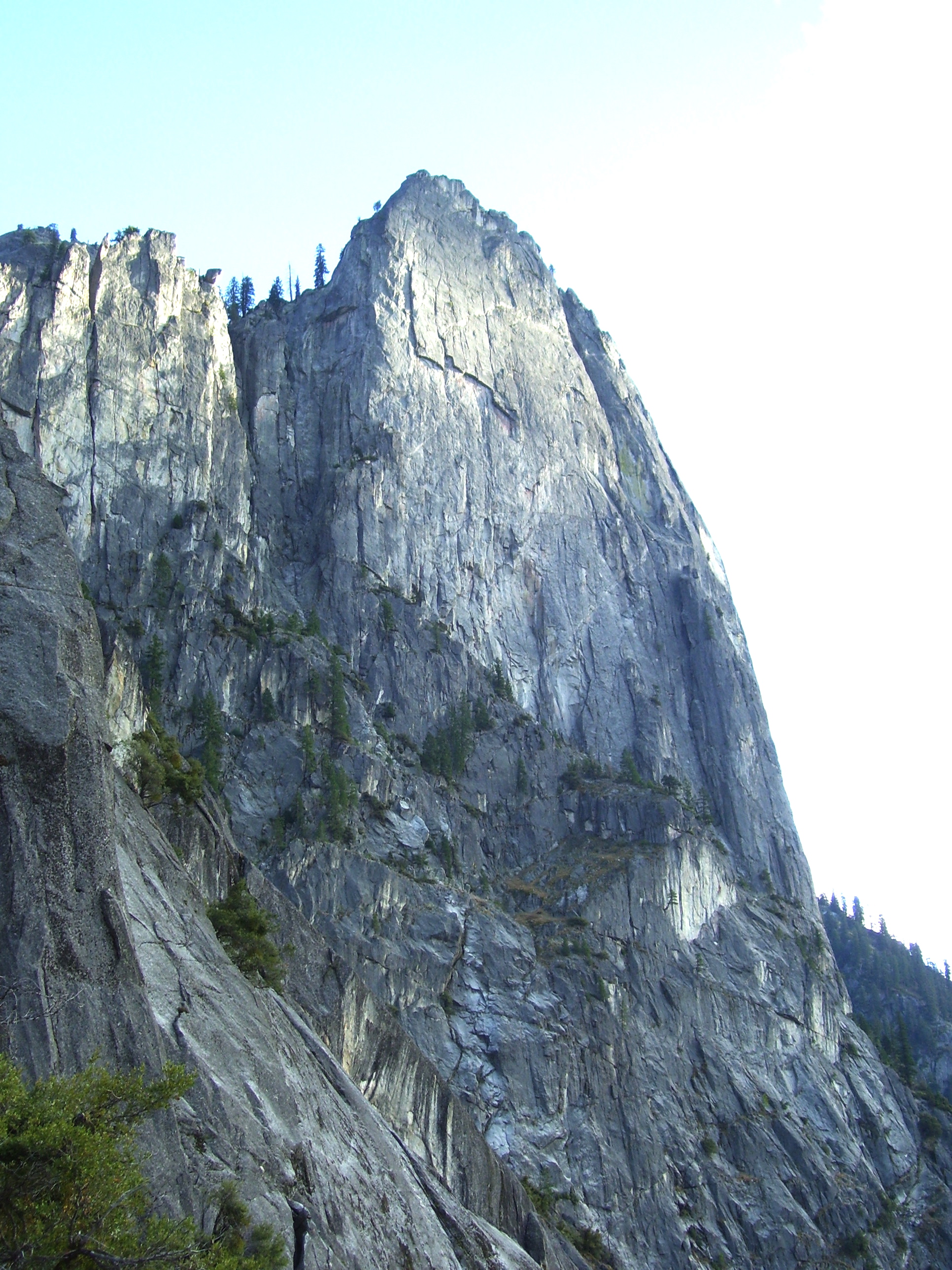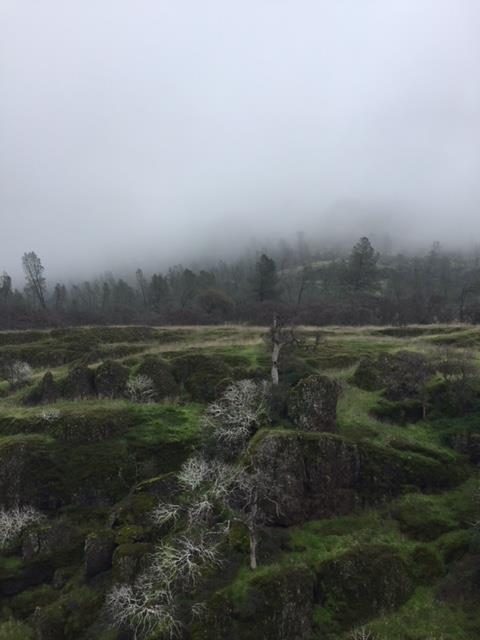Though the fog hadn’t burned off as it neared mid-afternoon, I hiked up-canyon beside the same stream that runs through town. The path is named the “Yahi Trail,” after the indigenous people who made this area their home until they were exterminated, relocated or assimilated.
As always on inclement days, the beauty of nature far surpassed one’s dim view of it indoors. That was never so clear as when I reached the narrow gorge over two miles from the closed gate. An opaque fog bank hung like a gray, ragged curtain, completely obscuring the cliffs above.
On days like this nature gives new meaning to the word “reclamation,” the antipode of the usual meaning, such as “the aggressive reclamation of woodlands for agricultural production.” Then, perhaps, you can feel the presence of ancient peoples who made the sacredness of the earth central to their lives.
The road into the canyon has been deliberately left unpaved and bumpy, and is closed at least two days a week. Chico has had the good sense to set aside the canyon, and prohibit “development” from spreading into it, though in recent years the city council has allowed monster houses to be built at the mouth of the canyon and despoil the viewshed from town.
Acorns were a staple of the Native Americans who lived in this area, and grinding-holes in flat slabs can be found along the banks of the stream. High above the creek, now flowing full and cold during California’s rainy winter season, are volcanic cliff-faces that form small caves under the rim. Gazing up at the drapery of rock on clear days evokes the mystery of nature, and questions about why humans stopped living in harmony with nature as science and technology developed.
Are the spirits of native peoples who lived on earth still present? Did the land they love absorb their essence, so that anyone with sensitivity can feel something of them?
There have been times walking alone on the steep hillsides, without the noise of a single machine, when the sense of anonymous people living here is strong. Without doubt, the ancient people felt as I feel today about the sacredness of the place.
I know little about those people, but a Native American who works for the fish and game department spoke of those who lived in the area before Europeans arrived and destroyed their way of life. They did indeed consider the canyon a sacred place, not only dwelling along the banks of the stream, but also gathering here from throughout the area to pray and perform their rituals.
During meditation, before all sensing or imagining ceases in the complete attention and stillness of mind, one feels their essence endures, within human consciousness if not in the land, waiting for living people who deeply care about the future of the earth and humanity.
of the earth and humanity.
This dark globalizing culture is not what the intelligence of the universe wants for human beings. There must be a revolution in people’s hearts and minds that changes the disastrous course of humankind, or the human spirit will become as denuded as man is making the earth.
Just before sunset most of the fog burns off, and the sheer, angular outline of sentinel rock appears. It does indeed seem to stand guard, as it has for all the ages of man in North America. The intense beauty of the place obliterates me, and it’s mildly disconcerting. Facing one’s fear, the only thing to do is let go.
In the beginning there was nothing and in the end there will be nothing. Why do so few drink from the infinite well of nothingness during life? Everything flows from and back into nothingness, which holds everything in its embrace, if we let it.
The cosmos has no pity except the pity that flows through human beings. Where Homo sapiens is concerned, the universe can only work through us, humans growing into human beings.
The walking dead have no relationship to anything, whereas awakening human beings share a kinship with all living peoples, even those that no longer walk the earth.
Martin LeFevre

No comments:
Post a Comment